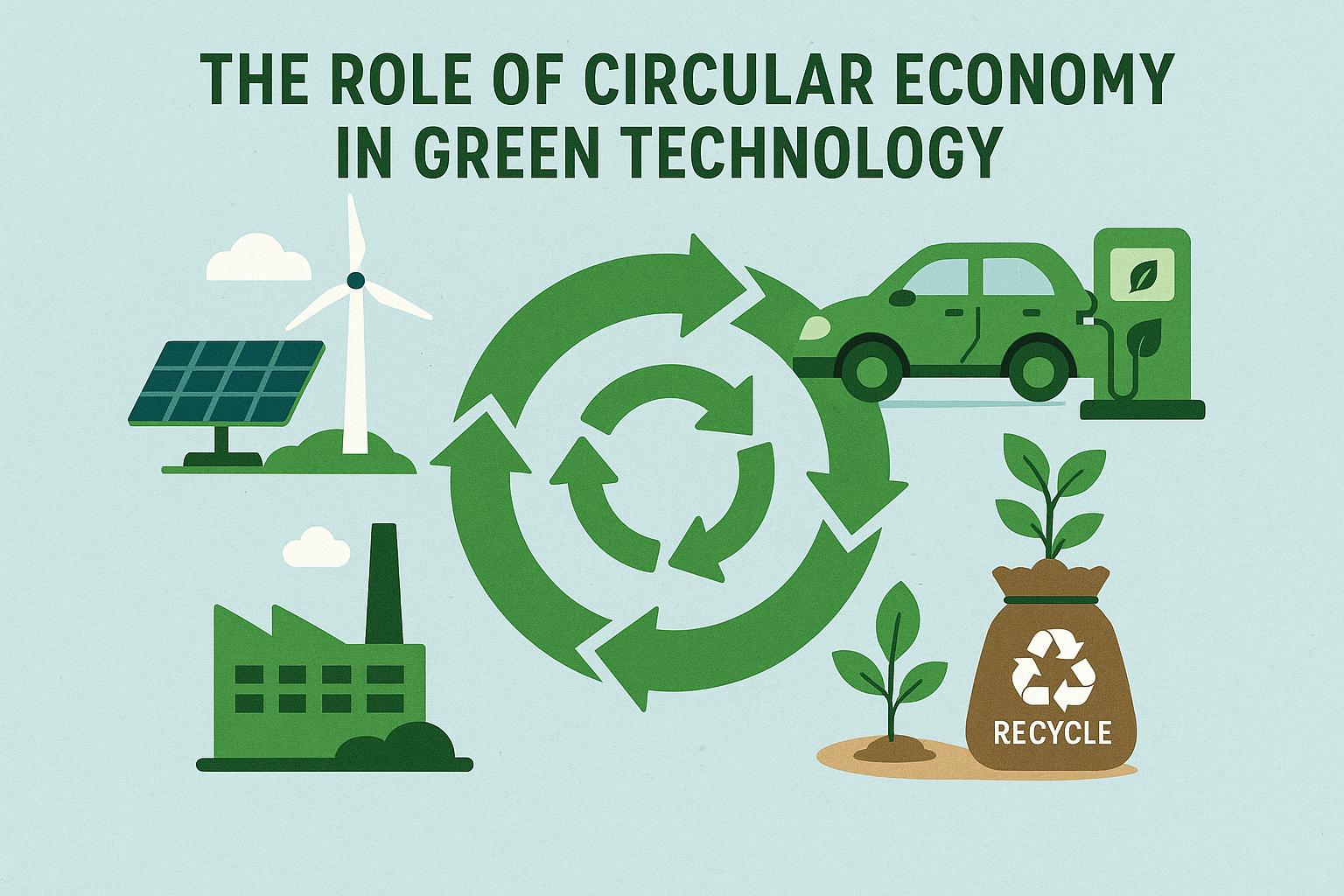
The Circular Economy: Fostering Sustainability and Innovation
The circular economy represents a groundbreaking shift in the way we perceive and utilize resources. This concept challenges the longstanding ‘take-make-dispose’ tradition of the linear economy and replaces it with a regenerative system that prioritizes resource efficiency and waste minimization. Central to this model is the idea of designing products and systems that maximize utility and lifespan, incorporating strategies for reusing, repairing, recycling, and remanufacturing. This holistic approach not only diminishes the depletion of natural resources but also heralds a transformation in technology and development that is sustainable and progressive.
Harmonizing Circular Economy Principles with Green Technology
Green technology, synonymous with clean technology, denotes innovations in products, services, and processes that leverage renewable materials and energy. This technology is designed to curtail emissions, decrease waste, and minimize the ecological footprint. Integrating circular economy principles into green technology propels these technologies towards even greater sustainability and efficacy.
Optimizing Resource Efficiency
The circular economy centers around resource efficiency, aiming to prolong the lifecycle of materials through thoughtful product design. Products are engineered to be robust, repairable, and composed of recyclable components. This approach aligns seamlessly with green technology’s objectives of conserving resources and reducing environmental impact. A quintessential example is the development of modular smartphones, which are constructed for easy upgrades and repairs, representing the synergy between circular economy principles and green technology.
Strategies for Waste Mitigation and Management
Waste reduction is a cornerstone of the circular economy, advocating for extensive recycling and repurposing of materials. Green technologies play a vital role in facilitating these processes. Innovative recycling techniques and waste-to-energy systems leverage circular strategies to convert waste into valued resources. These efforts not only sanitize the environment but also decrease the demand for virgin materials.
Reduction in Carbon Emissions
A direct consequence of adopting a circular economy model is the significant decrease in carbon emissions. This reduction stems from minimized raw material extraction and reduced energy consumption. Energy-efficient green technologies, such as advanced manufacturing techniques and renewable energy solutions—exemplified by solar panels and wind turbines—are integral to realizing a low-carbon economy. These technologies amplify the benefits of a circular economy by ensuring environmentally conscious consumption and production.
Economic and Social Ramifications
The circular economy extends beyond environmental advantages, offering considerable economic and social dividends. By fostering local production and repair avenues, it aids job creation and stimulates economic development. Furthermore, it encourages innovative business models, such as product-as-a-service, wherein consumers opt to lease products rather than make direct purchases. This paradigm shift incentivizes businesses to build enduring products and fosters long-term customer relationships.
Paving the Way Forward
The confluence of circular economy principles and green technology is a promising initiative towards a sustainable tomorrow. Achieving this vision necessitates a collective effort from governments, enterprises, and individuals alike. Effective policies that promote recycling, oblige producers to take extended responsibility, and encourage designing sustainable products are pivotal in advancing this transition.
Further Exploration and Considerations
Organizations like the Ellen MacArthur Foundation offer extensive resources on how the integration of circular economy concepts is progressively shaping the realm of green technology. These insights and tools can serve as a guide for both newcomers and seasoned participants in the industry who are seeking to foster a more sustainable and circular future.
In conclusion, adopting circular economy strategies enables green technology to enhance its environmental impact, inspire innovation, and lay the foundation for a sustainable, low-carbon economy. This transformative approach has potent implications for restructuring various industrial sectors and making significant strides towards achieving global sustainability targets. By embracing these changes, we not only secure an environmentally sustainable future but also lay the groundwork for continuous economic and technological advancements.